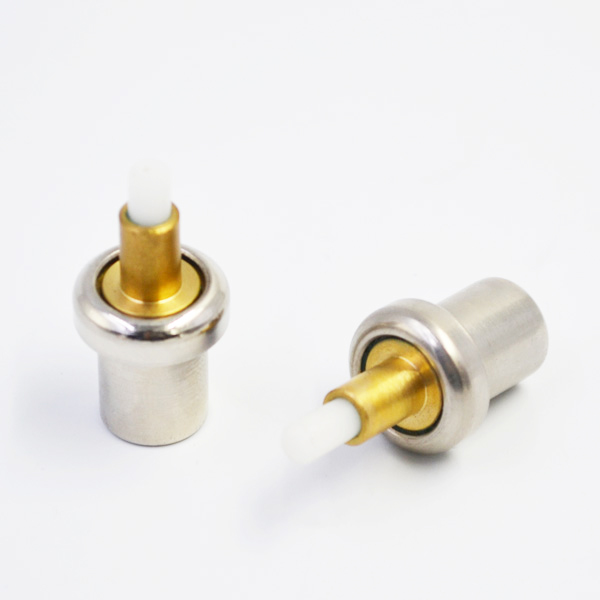The article mainly analyzes and elaborates the important modules of the broadcast transmitter monitoring system from the aspects of the acquisition controller, the acquisition controller function and the transmitter’s requirements for the acquisition controller. The automatic monitoring system software is designed by the multi-layer C/S B/S hybrid structure. The real-time monitoring software adopts the C/S B/S hybrid structure to realize data acquisition, transmitter control and multi client monitoring. The collected data and other work data are uploaded to the management center.
The remote management system software adopts the C/S B/S hybrid structure. Under this structure, users can not only browse various kinds of data of transmitters, but also return the data of the transmitter.

It can realize the functions of remote communication and transmitter remote control.
Automatic monitoring system and Local Area Network (LAN) of our unit. Any computer on the local area network monitors all transmitters. If the LAN connects to the Internet (Internet), it will be able to use any computer (cell phone) at any time and anywhere to master the working state of all transmitters. With the rapid development of video processing, computer, communication network, sensor and automatic control technology, the acquisition and control technology has been mature, making automatic monitoring system more and more widely used in broadcasting room. The goal of “left-behind and unattended” radio room has gradually become a reality.

Through the transmitter acquisition controller, the real-time parameters of the transmitter, including analog, state and switching variables, are collected and processed and sent to the switch.
The real-time monitoring, automatic control, automatic or remote manual backup of the transmitter parameters are completed. The transmitter parameter acquisition control adopts the “distributed” control structure, that is, each transmitter corresponds to a collection controller, and the acquisition controller can work independently from the computer system, and the whole transmitter monitoring system does not interfere with the normal operation of the transmitter. There is no dependence between the acquisition controllers. The failure of one acquisition controller does not affect the operation of the whole system. The acquisition controller is a link between the monitoring system and the transmitter, which is responsible for collecting the relevant real-time parameters of the transmitter.
The built-in clock system can automatically switch the transmitter according to the preset time parameters, and can automatically rewind the transmitter and rewind the antenna (see Figure 1). For transmitters without communication interface, thermostatic element the acquisition controller can collect 24 analog signals, 24 state signals and 8 control signals. Users can set index parameters according to the actual situation. Transmitter controller can be divided into coaxial switch and relay. For transmitters with communication protocols, the acquisition controller only needs to convert serial port output to network port output. The antenna switching module can automatically control the coaxial switch or vacuum relay to complete the conversion of the transmitter main and standby.

The acquisition controller has independent transmitter power judgment and main standby machine switching function. The acquisition controller can preset the switching time of two transmitters. When one transmitter works, the other transmitter is the standby transmitter.
The acquisition controller completes dynamic backup and backup switching when the outage occurs. The acquisition controller has the function of backup control and interlocking of antenna and feeder. The real-time control of ARM processor, the core of the acquisition controller, requires that the acquisition controller be fast and efficient. At present, the acquisition controller uses ARM processor (Advanced RISC Machines), which is the RISC (Reduced Instruction Set Computer) architecture of reduced instruction set. The RISC structure gives priority to the simple instruction with the highest frequency of use, avoiding complex instructions; fixes the length of instruction, reduces the types of instruction format and locality seeking mode; mainly uses control logic, and adopts multi-level pipeline processing without or with little microcode control.
Tasks, a large number of registers are used, data processing instructions only operate on registers, only load / store instructions access memory, which improves the speed of instruction execution. It has the characteristics of small size, low power consumption, low cost and high performance. The 51-Core MCU is the CISC architecture of the centralized instruction set, which uses single-level sequential processing tasks. Compared with ARM, the processing speed is faster and more efficient.
ARM processor has more built-in hardware protocols, such as SPI interface, IIC interface, USB interface and so on. These interfaces greatly facilitate the use of users and improve the execution efficiency. The built-in RAM and FLASH of ARM processor are larger than that of single chip processor, so large and medium-sized projects can be completed without external expansion RAM and FLASH, which brings greater convenience to users. Because of the reasons of ARM processor chip itself, the chip has a great improvement in anti-impact and anti-interference than single-chip computer. And the ARM9 based control chip can also run complex operating systems, such as Linux and wlnce, so that users can manage and operate different events to achieve real-time processing of multiple tasks.
It has the function of indicating the status of equipment, indicating and displaying the communication fault of transmitter, the failure of transmitter backing up, the communication fault between collectors, etc. by running program, and displaying the status of switch command issuing. Functions can be extended. The acquisition controller is a very important module in the broadcast transmitter monitoring system, and its performance determines the quality of the whole monitoring system. With the wide application of automatic monitoring system in industry, agriculture, power, medical treatment, broadcasting and television, the acquisition controller has fast and reliable performance, which provides powerful technical support for the application of monitoring system.
